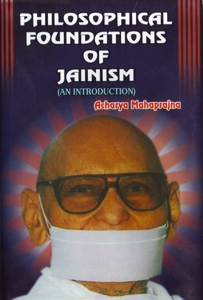Jainism affirms that there is a relation of bhedābheda i.e., 'identity-cum-difference' between the soul and the body. The view that the soul is identical with the body is based on the fact—"Kāyena kṛṭasya anubhavanāt"—"All our worldly actions are experienced by the soul through the body." Thus, the body is the medium to feel and to experience the fruits of what we do. In that sense, there is 'abheda' (identity) between the two viz., soul and body. But since soul remains intact even when the body vanishes, the two i.e., soul and body are different. When our soul rests with our body that it occupies, it is the governing unit which gives commands for all our actions. In that sense the soul and the body work in unison. It should also be understood that the soul is an indivisible whole since the soul is not divisible in fragments resting in different parts of the body.
But the body's parts are divisible. Suppose, if a part of body is severed or cut off from the body, that part will become separate from the body and that will become senseless, i.e., without the capacity to experience or have any sensation, but the remaining body will still have the capacity to have sensation. It means that the soul has become contracted in the remaining body; but the soul can never be cut into two or many parts. Similarly, if a hole is created in the body, the soul does not have the hole in it. Thus, the soul is separate from the body.
In absence of soul, the dead body cannot have the sensation or experience of pain etc. If however both are considered to be absolutely identical, then when the body is cremated then the soul also would get burnt, and if it really happened so, then there would not be the next worldly existence of the soul. It would amount to the denial of the doctrine that the soul is non-inflammable, or incumbstible, non-piercable and non-divisible. Even if we look at this relationship from other angle, we reach the same conclusion i.e., 'bheda-cum-abheda'. When we analyse the subtler body (Karma-śarīra), the soul and body appear to be integrated. On the contrary, if we analyse the gross body (audārika śarīra), the two look quite distinct. This interpretation however is not so strong as the former one.
Some Western philosophers have also pondered over the above subject. The 'Nāstikas' (non-believers in existence of soul) among the philosophers hold the view that the soul and the body are one and the same. On the contrary 'Ātmavādins' (believers in the real existence of soul) say that the body and the soul are different realities. Lord Mahāvīra said that the ultimate truth lies in neither of these two opposite view-points. At best, they are partial truths. We can understand the distinctness as also their oneness or identity only through a relative perspective or vision.
If they are absolutely distinct from each other, then no interaction or impact is possible between them. We get the illustration of the relation of 'rain' and 'the sun' with the sky. If the sky is one and the same with rain and sun, then there cannot be any interaction between them, and if on the other hand, they are absolutely different, then they cannot have any relation with each other. So, Lord Mahāvīra said—'Both are identical as well as different'.
Now, the question may arise whether the body is corporeal or non-corporeal. The answer is that it is both—the karma-body is non-corporeal, for it is not perceptible. The gross body is corporeal, for it is visible. Just as the protoplasm is very fine and hence, it is not visible through eyes, so also the karma-body is imperceptible.
The question whether the body is animate or inanimate can also be answered thus—it is animate as well as inanimate. The body of a living being is animate, while that of a dead creature is inanimate.
The etymological meaning of the word jīva is—"jīvati prāṇān dhārayati iti jīvaḥ." It means, that which is living or which sustains the prāṇa i.e., vital energy, is jīva. We (human being) are jīva with physical body (audārika śarīra). But it is different from the karma-body, in which the soul transmigrates between two successive births.
'Muktātma'—the liberated souls do not enter this cycle of births. We, the mortals, are alive due to 'dravya prāṇa' (physical life-force) filled in our bodies. But the liberated souls, though they are also called jīva, they exist as pure souls without any physical life-force. Their existence rests on 'bhava prāṇa' which is non-physical.
'Ajīvas' also may have the body. A photograph of a person or his statue is nothing else but ajīva, which has the body. Thus, both jīva and ajīva can have the body.
There is relationship between jīva and body, jīva and mana, jīva and speech. The second and third relationships are not long lasting but the first one is of lasting nature.
The word kāya means body. It remains for a longer time, and hence it is called kāya. The etymological meaning of body is—"kāyajja śarīra". It is the state of continuous collection—cīyamāna.
When jīva bears a body, there is continuous process of metabolism, which goes on till dealth. This has been described as the state called 'chīyamāna'. In our body, every moment there is influx of new particles of matter and also outfulx of older ones. To understand this process, let us take the example of sand being collected in a fist. Quite a great number of particles are dropped from it. The metabolic process of the body is like this.
 Acharya Mahaprajna
Acharya Mahaprajna

